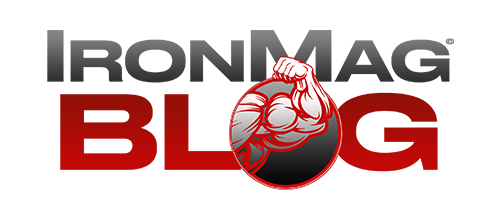
by Mike Arnold
To the typical American, the pursuit of bodybuilding is often perceived as a simplistic affair requiring little intelligence or insight. To them, success is determined by little more than grunting in the gym and eating an abundance of protein. While this has caused many to label its adherents with less than flattering stereotypes, those who have seen the sport from the inside know differently.
Now, it is true that no single aspect of bodybuilding is overly complicated, but the foundational sciences of which the sport is comprised can be enormously complex, requiring doctorates and beyond before one is officially recognized as possessing an advanced level of learning in any single branch. Even then, it only scratches the surface of the total amount of knowledge contained therein.
Areas of study, such as nutrition, physiology, anatomy, kinesiology, endocrinology, and even psychology are all at work in the accomplishment of our goals. The more thorough our understanding of these subjects, the more likely we are to make decisions leading to accelerated progress.
With such a large amount of information tied into the application of the sport and a nearly unlimited number of sources to draw from, knowing how to prioritize for success can be confusing, especially with many of these sources offering up conflicting ideas. Evidence of this can be found in gyms all over the country. How many people, despite toiling away for months or even years at a time, make little to no progress? In my estimation, it is the majority.
However, by establishing a program based on time-proven principles, you can avoid the pitfalls most commonly responsible for a lack of progress. Getting on the right track is simply a matter of understanding what is and isn’t essential, then implementing those essentials in the correct manner. In the following paragraphs, we will go over how to do just that.
There are 3 main areas of focus which form the hub of any successful bodybuilding program. They are training, nutrition, and sleep. For the chemically assisted athlete, performance enhancing drugs is the 4th and final category on the list.
While this may seem like the most rudimentary of information, the fact that so many BB’rs profess to have an adequate understanding in these areas, yet have been unable to build any meaningful degree of size, is proof positive that they don’t. Truth be told, consistently applying the information you will learn here is the most difficult aspect of bodybuilding. Quite frankly, it is hard work and requires a level of consistency and dedication that most people simply aren’t willing to put in. Whether your desire is to compete onstage or just to get big & strong, the principles for success remain the same.
Training
It should be stated right up front that there is no single best way to train, as there are many styles of training out there which provide impressive results. However, as a beginner or struggling intermediate, program construction should be based on the principles which have proven to provide the best gains in the largest number of people at your stage of development, until which time you have amassed enough experience to be able to accurately listen to your own body. It takes years of regular training to reach this point and when you do, you will no longer need anyone to tell you how to train, as you will already know what does and doesn’t work for you. This is not to say that those who reach this point are no longer able to learn from others, as the journey of bodybuilding is a life-time learning experience, but we will have reached a level of proficiency where we no longer need anyone to hold our hand.
In the meantime, the first couple years of training should consist of a basic, abbreviated routine centered around the core mass-builders, with a strong emphasis on progressive resistance. For many, after looking at some of the suggested routine to follow, the first impression is one if inadequacy. They believe they need to do more exercise, more sets, and train more days per week. They also tend to want to include more fancy machines, do more isolation exercises, and often think they should be using intensity techniques like forced reps and drop-sets on a regular basis. These are just some of the reasons why so many beginners never build a solid base of muscular size.
Their inability to understand what drives muscle growth and the balancing act between training and recovery taints their perspective and leads them to make decisions which undermine their progress. Many also fall into the trap of thinking that the physical reactions associated with training, such as the pump, fatigue, and/or burning in the muscles are indicators of muscle growth and therefore, they gauge the effectiveness of their workouts by the intensity of these feelings. This often leads to poor program construction and subsequent overtraining.
Their confusion is compounded when they see the routines of the IFBB pros. It is easy for a novice to be influenced by the habits of a pro BB’r, especially when he/she has a desire to emulate them in terms of development. So, when they watch a video of a champion BB’r training a single bodypart with 5-6 exercises of 4-5 sets each and then explaining to the fans that they train mostly for “the pump”, they frequently believe they should do the same. However, what many beginners do not realize is that these routines are rarely the same ones the pros used to build their mass in the first place.
In addition, by the time a BB’r has earned professional status, he is concerned with more than just mass acquisition. Bringing up weak points, improving muscle maturity, and avoiding injury are just a few of the things on a pros mind and his training reflects this. Blindly copying the routine a professional BB’r, although perhaps inspiring, is rarely advocated by those in the know, and if you ask most pro BB’rs, they will tell you the exact same thing.
Fortunately, building a solid foundation of muscle tissue is a rather simplistic process, in terms of training. In general, one’s routine should not include more than 3-4 total training sessions per week, with each bodypart being trained once every 5-7 days. The basic, compound movements should form the crux of your routine, with isolation exercises included only when necessary (for example, the side delts cannot be properly trained without side laterals, making this isolation exercise a necessity). Rep ranges should generally fall within the traditional hypertrophy rep rage of 6-12 for upper-body and 8-15 for legs.
Total volume should be moderate, depending on the exercise performed and the individual’s proficiency in performing the lift. Low-set or H.I.T. is insufficient at this stage of development, not because the system is flawed, but because a beginner is not able to take maximum advantage of this style of training. A beginner must perform at least a few sets per exercise in order to maximize neural development, which is essential to learning proper lifting technique, developing a mind-muscle connection, and being able to engage the greatest number of muscle fibers during a lift. Until a BB’r has at least a decent level of development in this area and has learned to feel the target muscle working during all of his lifts, he will not be able to place enough stress on the target muscle to justify doing only one set. Even the great Dorian Yates himself stated that it took him several years of very intense and dedicated training to be able to extract maximum benefit from a single working-set.
High volume training isn’t much better. While there are certainly BB’rs who have thrived on this type of training from day one, just as some proponents of H.I.T have also done, the vast majority of individuals will net better overall gains by adhering to a program somewhere in the middle of these 2 extremes. I tend to advise 2-3 work-sets per exercise and 2-4 exercises per bodypart, with larger bodyparts falling at the upper-end of this recommendation and smaller bodyparts at the lower-end.
Finally, the single most important principle available to beginners looking to gain mass is progressive resistance. Progressive resistance is the gradual increase in weights and/or reps whenever possible. In other words, you need to get stronger if you want to get bigger, particularly while training within the hypertrophy rep range. Training like a powerlifter in the 1-3 rep range is not going to get the job done. Unless you want to look like a powerlifter, do not train like one. Of course, not all powerlifters train solely in the lower rep ranges and many have developed quite an impressive physique, particularly some of the raw lifters, but it does not change the fact that training in the low rep range is not conducive to maximum muscular development.
At no other time in your life will the body be able to make greater strength gains than during its first 1-2 years of training, so take full advantage of this brief window of opportunity to add as much strength…and therefore mass, as possible. The bottom line is that you will never come anywhere close to approaching the size of today’s pros if you don’t increase your strength significantly. When is the last time you saw a man with a chest like Arnold, Ronnie, or Haney, who could only bench press 250 lbs? The answer=never. How about the last time you saw Platz-like legs on a man who could only squat 300 lbs? Or, Dennis Wolf-like delts on someone who could only do overhead presses with 185 lbs?
The point here is that all of these men, and anyone else who has built a considerable amount of size for their frame, did so using relatively heavy weights. Of course, variances in genetic ability can account for considerable differences in strength among men of equal size, but it does not take away from the fact that all of these men still had to add quite a bit of strength in order to achieve their current level of development. There is no scale we can refer to in order to determine how much strength one will need to add in order to reach a certain size, as genetic differences make this an impossibility. However, you can rest assured that if you develop impressive strength while training within the hypertrophy rep range, you will build impressive size to go along with it.
Fundamental to this goal is the keeping of a log book, in which you should record all of your exercises, sets, and reps for each workout. With each successive workout, you should attempt to do either more weight for the same reps, more reps with the same weight, or both. This gives you a clear-cut goal for every training session. Now, while you may be able to continue adding strength consistently for the first several months, you will eventually find that strength gains start to slow down. Instead of continuing to add weight at nearly every workout, you may now only get stronger every 2nd or 3rd workout and as time progresses, strength gains will begin to take place even less frequently. However, only those who persevere end up taking things to the next level. Ronnie Coleman, who was the biggest and perhaps the strongest BB’r of all time, continued focusing on progressive resistance throughout his entire career and even at 38 years old, was still getting stronger and bigger.
By keeping progressive resistance at the heart of your routine for the first few years of training (and preferably beyond), you will continue to move onward and upward much more quickly than the pump-trainer who is still using the same weights as he was 3 years ago. Below is a sample routine which will provide excellent results for the beginner.
Monday
1.) Flat barbell press: 3 sets X 6-10 reps.
2.) Incline barbell press: 3 sets X 6-10 reps.
3.) Barbell curls: 3 sets X 6-10 reps.
4.) Preacher curls: 3 sets X 6-10 reps.
5.) Lying tricep extensions: 3 sets X 6-10 reps.
6.) Dips: 3 sets X 6-10 reps.
Tuesday
OFF
Wednesday
1.) Deadlifts: 1 set X 10 reps. 1 set X 20 reps.
2.) Wide grip chins: 3 sets X 6-10 reps.
3.) Barbell rows or/ Traditional T-bar rows: 3 sets X 6-10 reps.
4.) Overhead seated barbell press: 3 sets X 6-10 reps.
5.) Dumbbell side laterals: 3 sets X 6-10 reps.
6.) Rear dumbbell/machine laterals: 3 sets X 6-10 reps.
Thursday
OFF
Friday
1.) Full squats: 2 set X 20 rep-breathing squats.
2.) Leg press: 3 sets X 10 reps.
3.) Leg curl: 3 sets X 10 reps.
4.) Toe press on leg press: 3 sets X 10 reps.
5.) Seated calve raise: 3 sets X 10 reps.
* Squats: After several sets of warm-ups, select a weight you can perform for 10 reps in non-stop fashion to failure. Then after you hit 10 reps, begin resting in-between each additional rep until you reach 20 total reps. After you get to 20 reps your set is over. Perform 2 sets.
Saturday
OFF
Sunday
OFF
Before we wrap up the training segment, I want to touch on rest periods between sets. Again, keep in mind that all of the training recommendations here are based on generalities—on what has been proven to work in a large percentage of beginners for gaining mass & strength. With that said, being that progressive resistance is the backbone of your program, you want to rest long enough to restore your strength in-between sets. That can be as little as 2 minutes for smaller bodyparts and as many as 5 minutes or more when doing very demanding exercises like 20 rep deadlifts or squats.
One’s cardiovascular endurance will play a role in determining the ideal rest period. Those with excellent cardiovascular endurance will likely be able to take slightly shorter rest periods than the average lifter, while those with poor cardiovascular endurance may need to take a bit more time than the average. Generally speaking, you want to at least wait until your breathing returns to normal before you return to your next set, but you don’t want to wait so long that you start to lose your pump.
Stay tuned for part 2…


 Unsubscribe at anytime, no spam & we do not sell your info!
Unsubscribe at anytime, no spam & we do not sell your info!
